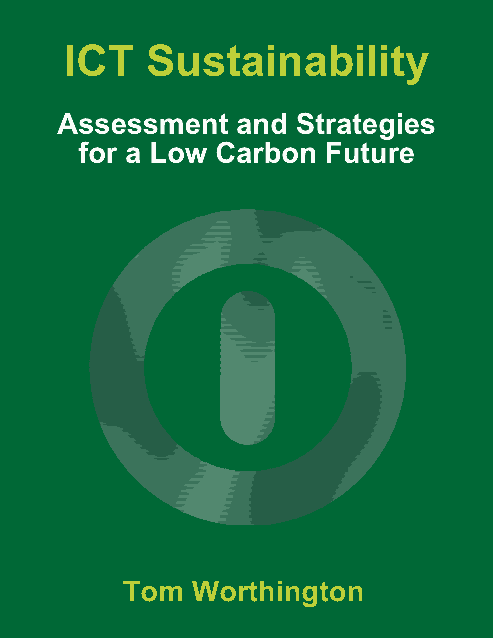In 2008 the Australian Computer Society commissioned Tom Worthington to design an e-learning course for teaching IT professionals how to reduce greenhouse gas emissions from computer systems. The ACS permitted the course material to be made freely available. The course is now offered by the Australian Computer Society, Australian National University, Open Universities Australia and Athabasca University (Canada).Tom will discuss the difficulties and benefits of using a Creative Commons license for educational materials which is now used globally by multiple universities.
The topic of "sustainable", "environmental" or "green" ICT have in recent years attracted interest from both industry and academia. Despite this there are few sustainable ICT courses being taught at universities throughout the world.
Sustainable ICT is multi-disciplinary and draws from fields such as computer science, software engineering, electrical engineering, information systems, environmental science and management.
The objective is to have the students familiar with the terminology and techniques so they can estimate and make written recommendations on the carbon footprint of an organisation. The students need to be able to discuss the issues with their peers and write formal reports for management.
One major challenge when teaching sustainable techniques is that students will have different backgrounds. Emphasis was placed on practical aspects with the two assignments for the course requiring the student to address sustainable ICT issues in a real organisation, preferably one where they worked.
To give experience in discussing the issues, the students used an on-line text based forum. As an incentive to keep up with the work, 20% of the assessment was for weekly forum contributions, with the balance for mid and end of course assignments. No examinations were used.
In 2008 the Australian Computer Society commissioned the design of a Green ICT course1 to be delivered using mentored and collaborative e-Learning2. The course was first run in February 2009 as part of the ACS Computer Professional Education Program (CPEP)3. The program uses Internet delivered e-learning, via the Moodle open source Learning Management System. Students are assessed on their contribution to group discussions and assignments. The CPEP is a postgraduate masters level program leading to Certified Professional (CP) status, accredited by the International Professional Practice Partnership (IP3)4.
The ACS allowed the course materials for Green ICT to be released under a Creative Commons open access license. A book of course notes5 was distributed free on line as well as a print and e-book.
The Australian National University offered a revised version of the course6 in July 2009. The course was offered on-line to in the Graduate Studies Select program7, as well as on-campus full and part time students.
One of the former students of the ANU course adapted the material for North America8.
The Creative Commons Attribution-Share Alike 2.5 Australia License was selected initially for the material. This was updated to the 3.0 Australia License for the later edition.
These are notes for "Creative Commons to save the planet": http://www.tomw.net.au/technology/it/open_access_for_sustainability/
Presentation slides are also available.
